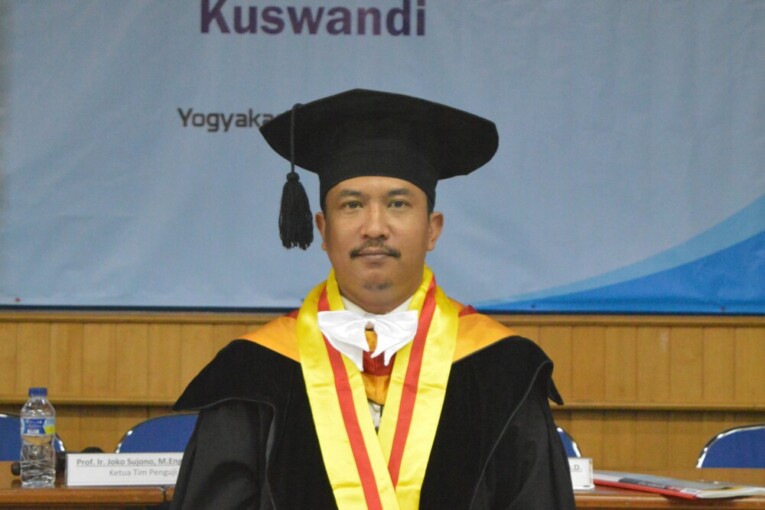
Simulation of abrasion physical model around buildings due to tsunami is very limited. Tsunami is modelled as solitary wave that requires relative open channel. However, not many research institutes have laboratories with high flume capacity. This made one engineering doctoral student of UGM to build a method for generating a run-up tsunami with short relative channel.
“The aim of the research is the method of generating a run up tsunami using relative short flume, developing formula of the process and depth of abrasion due to tsunami around cylinder shaped buildings, developing mathematic model of sediment load for local abrasion simulation in cylinder shaped building,” said Kuswandi when doing his open doctoral promotion at Civil Engineering and Environment Department UGM on Friday (28/7).
He defended his dissertation entitled Abrasion in Loose Sand around Cylinder Shaped Building due to Run-Up and Run-Down Tsunamis. The research is done using physical model simulation at the Hydraulics and Hydrology lab of UGM. The open channel dimension he used in the research was 20,7 mx 1,43 mx 1,5 m. Run-up formed by the tsunami with two way opening system dam break, and air depth and speed of tsunami flow is measured with tilt sensor.
“This research is equipped with mathematic model simulation, including simulation of run up tsunami model using two way system dam break, simulation of run up tsunami model resembling solitary wave,” he added,.
The lecturer from Institut Teknologi Medan said the development of mathematic model of sediment load and abrasion in this research can explain the process of abrasion around the cylinder due to the tsunami. The initial time the abrasion was formed was very big during the run-up and later reduced with the change in flow velocity until the time of run-down.
“The change of shape and depth of abrasion that happen during the run-down is like abrasion flow and sedimentation in potholes,” said Kuswandi.
He recommended time variations of opening door, two way opening model, length of reservoir and variations of tilt became the variables that can be done for further research. Next, he suggested that beachfront building that use shallow foundation shall be designed by considering tsunami abrasion possibilities.
“The building that uses pillar foundation has to remain stable when abraded until the maximum abrasion during run-up or run-down such as what shown in this research,” he said.


